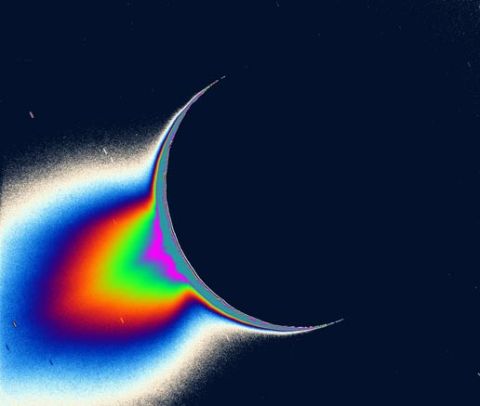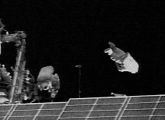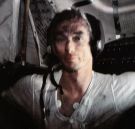Both Mars rovers have far exceeded their “warranty” and despite setbacks from time to time, have bounced back to carry on with their extended missions. The Spirit rover is currently limping (backwards, on five out of six wheels) toward it’s winter resting place atop a hill named “McCool.”
From Jet Propulsion Labs:
Mars Exploration Rover Mission: The Mission
Spirit Continues Driving on Five Wheels:
Spirit continued to make progress toward “McCool Hill” despite a reduction in solar energy and problems with the right front wheel. The team plans to have the rover spend the winter on the hill’s north-facing slopes, where the tilt toward the sun would help maximize daily output by the solar panels. On Spirit’s 779th sol, or Martian day (March 13, 2006), the drive actuator on the right front wheel stalled during a turn to adjust the position of the rover’s antennas. The stall ended the day’s drive, which brought Spirit 29 meters (95 feet) closer to McCool, still approximately 120 meters (390 feet) away.
Engineers conducted tests on sols 781 and 782 (March 15 and 16, 2006) on a testbed at the Jet Propulsion Laboratory as well as remotely on Spirit. Further analysis is needed to determine what caused the right front actuator to stop working. Meanwhile, the operations team has successfully commanded Spirit to drive using only 5 wheels. Engineers plan to have Spirit continue driving backward with five healthy wheels while dragging the right front wheel.


 If you step out this evening or or tomorrow evening, you might catch a glimpse of the seldom-seen planet – Mercury. Known as the
If you step out this evening or or tomorrow evening, you might catch a glimpse of the seldom-seen planet – Mercury. Known as the  SUITSAT IS SILENT: Space is cold–apparently too cold for SuitSat’s batteries. The Earth-orbiting spacesuit stopped transmitting shortly after it was thrown overboard from the International Space Station on Feb. 3rd. Probable cause: lack of power.
SUITSAT IS SILENT: Space is cold–apparently too cold for SuitSat’s batteries. The Earth-orbiting spacesuit stopped transmitting shortly after it was thrown overboard from the International Space Station on Feb. 3rd. Probable cause: lack of power.  January 30, 2006: Moondust. “I wish I could send you some,” says Apollo 17 astronaut Gene Cernan. Just a thimbleful scooped fresh off the lunar surface. “It’s amazing stuff.”
January 30, 2006: Moondust. “I wish I could send you some,” says Apollo 17 astronaut Gene Cernan. Just a thimbleful scooped fresh off the lunar surface. “It’s amazing stuff.” January 26, 2006: One of the strangest satellites in the history of the space age is about to go into orbit. Launch date: Feb. 3rd. That’s when astronauts onboard the International Space Station (ISS) will hurl an empty spacesuit overboard.
January 26, 2006: One of the strangest satellites in the history of the space age is about to go into orbit. Launch date: Feb. 3rd. That’s when astronauts onboard the International Space Station (ISS) will hurl an empty spacesuit overboard.